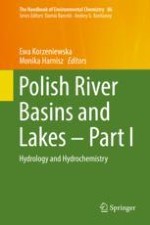2020 | OriginalPaper | Buchkapitel
Total Organic Carbon in the Water of Polish Dam Reservoirs
verfasst von : Andrzej Górniak
Erschienen in: Polish River Basins and Lakes – Part I
Aktivieren Sie unsere intelligente Suche, um passende Fachinhalte oder Patente zu finden.
Wählen Sie Textabschnitte aus um mit Künstlicher Intelligenz passenden Patente zu finden. powered by
Markieren Sie Textabschnitte, um KI-gestützt weitere passende Inhalte zu finden. powered by
